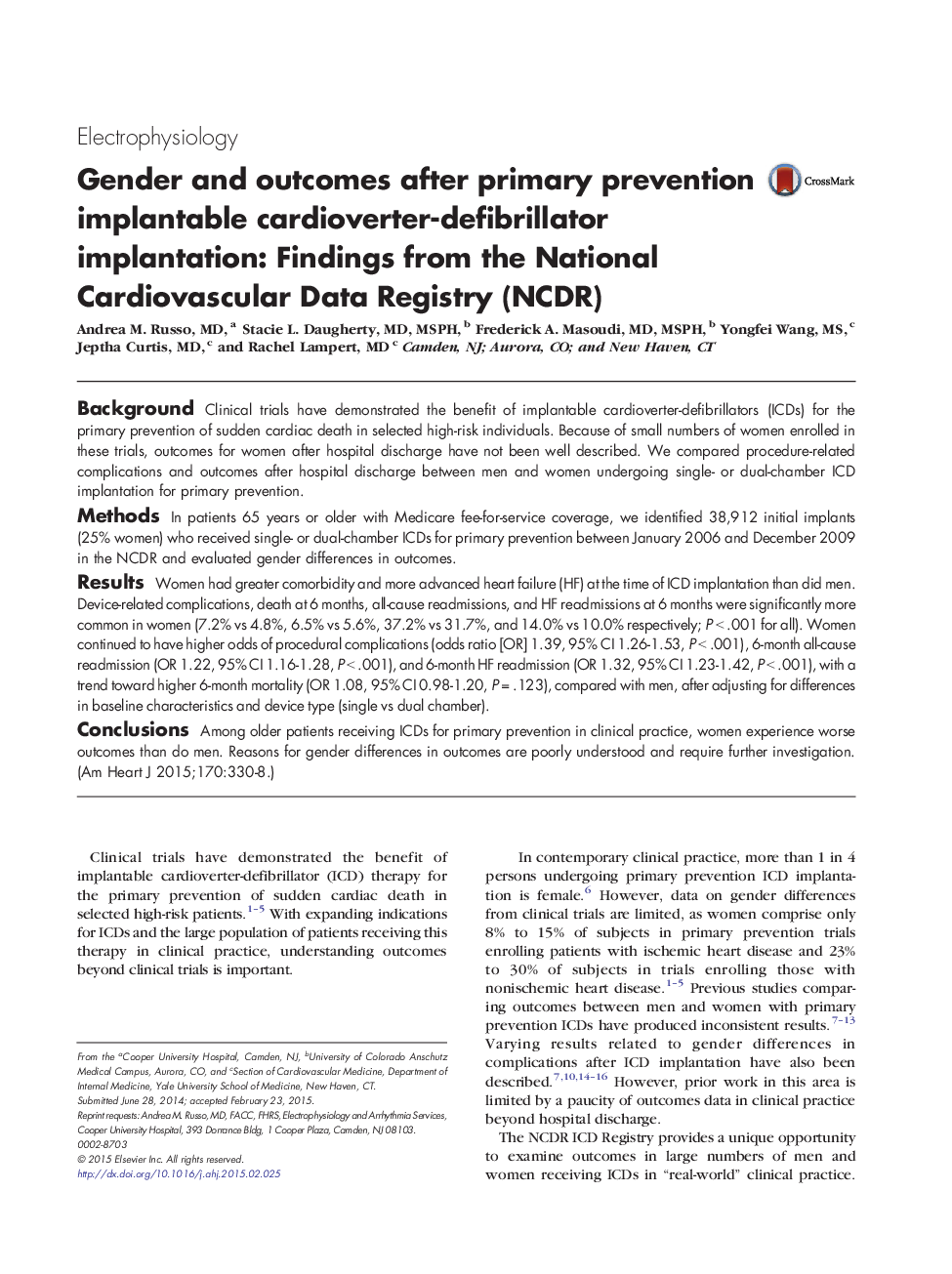| کد مقاله | کد نشریه | سال انتشار | مقاله انگلیسی | نسخه تمام متن |
|---|---|---|---|---|
| 2850359 | 1167763 | 2015 | 9 صفحه PDF | دانلود رایگان |

BackgroundClinical trials have demonstrated the benefit of implantable cardioverter-defibrillators (ICDs) for the primary prevention of sudden cardiac death in selected high-risk individuals. Because of small numbers of women enrolled in these trials, outcomes for women after hospital discharge have not been well described. We compared procedure-related complications and outcomes after hospital discharge between men and women undergoing single- or dual-chamber ICD implantation for primary prevention.MethodsIn patients 65 years or older with Medicare fee-for-service coverage, we identified 38,912 initial implants (25% women) who received single- or dual-chamber ICDs for primary prevention between January 2006 and December 2009 in the NCDR and evaluated gender differences in outcomes.ResultsWomen had greater comorbidity and more advanced heart failure (HF) at the time of ICD implantation than did men. Device-related complications, death at 6 months, all-cause readmissions, and HF readmissions at 6 months were significantly more common in women (7.2% vs 4.8%, 6.5% vs 5.6%, 37.2% vs 31.7%, and 14.0% vs 10.0% respectively; P < .001 for all). Women continued to have higher odds of procedural complications (odds ratio [OR] 1.39, 95% CI 1.26-1.53, P < .001), 6-month all-cause readmission (OR 1.22, 95% CI 1.16-1.28, P < .001), and 6-month HF readmission (OR 1.32, 95% CI 1.23-1.42, P < .001), with a trend toward higher 6-month mortality (OR 1.08, 95% CI 0.98-1.20, P = .123), compared with men, after adjusting for differences in baseline characteristics and device type (single vs dual chamber).ConclusionsAmong older patients receiving ICDs for primary prevention in clinical practice, women experience worse outcomes than do men. Reasons for gender differences in outcomes are poorly understood and require further investigation.
Journal: American Heart Journal - Volume 170, Issue 2, August 2015, Pages 330–338